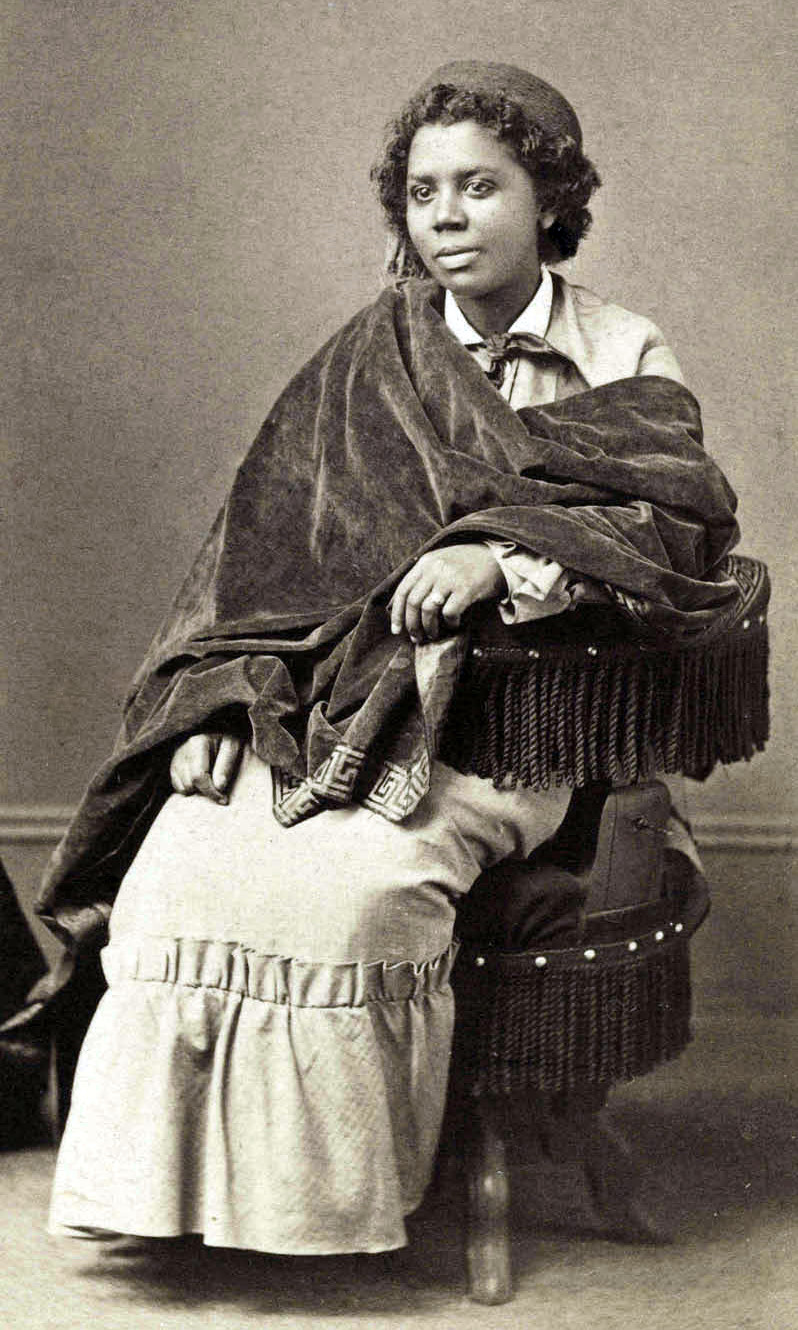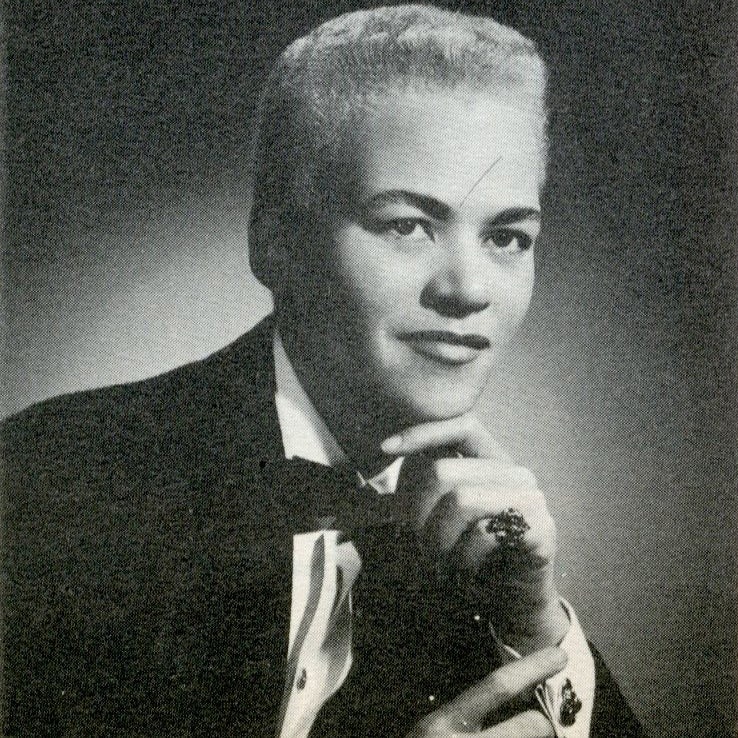
Edmonia Lewis
Edmonia Lewis was born on July 4, 1844 (to September 17, 1907). She was an important American sculptor who gained fame and recognition in the international fine arts world.
Mary Edmonia “Wildfire” Lewis was born in Greenbush, New York, the present-day city of Rensselaer. Her father was Haitian of African descent, while her mother was of Mississauga Ojibwe and African descent. Her mother was known as an excellent weaver and craftswoman, and her family’s artistic background later inspired Lewis in her work.
When Lewis was about nine years old, both of her parents died within a year of one another. Lewis and her older brother, Samuel, were taken in and lived with their mother’s sisters for the next three years. Lewis and her aunts sold Ojibwe baskets and other crafts to tourists visiting Niagara Falls, Toronto, and Buffalo. Becoming a successful businessman and gold prospector, her brother Samuel paid for her tuition to the New York Central College. Lewis was rebellious and did not learn English well, so Samuel suggested she transfer to Oberlin College, outside Cleveland, Ohio. At the time, Oberlin was one of the first higher education institutions in the United States to admit women and people of differing ethnicities. Lewis’s decision to attend Oberlin was one that would significantly change her life, as that is where she began her art studies.
In 1862, an Edmonia and two classmates, Maria Miles and Christina Ennes, were involved in a well-publicized incident while students at Oberlin College. The three women planned to go sleigh riding later that day. Lewis had served her friends a drink of spiced wine, and shortly after, Miles and Ennes fell severely ill. Doctors reportedly concluded that the two women had a poison in their system, apparently cantharides, a reputed aphrodisiac. Because the woman recovered, the authorities initially filed no charges.
Townspeople attacked Lewis while she was walking home alone one night. She was dragged into an open field by unknown assailants and badly beaten. Those responsible for her injuries were never apprehended. Due to the attack, local authorities arrested Lewis, charging her with poisoning her friends. The college defended their student throughout the trial, and John Mercer Langston, the only practicing Black attorney in Oberlin, represented Lewis. Although most witnesses testified against her and she did not take the stand in her own defense, the jury found her not guilty.
Lewis began to study under a well-known sculptor, Edward Augustus Brackett. Under his tutelage, she crafted her own sculpting tools and sold her first piece, a sculpture of a woman’s hand, for $8. She opened her studio to the public in her first solo exhibition in 1864.
Lewis was inspired by the lives of abolitionists and Civil War heroes. She met Union Colonel Robert Gould Shaw, the commander of an African American Civil War regiment from Massachusetts. She created a bust of his likeness, and the very impressed Shaw family purchased the work. The poet Anna Quincy Waterston was inspired to write a poem about both Lewis and Shaw.
Early works that proved highly popular included medallion portraits of the abolitionists John Brown and William Lloyd Garrison. Lewis also drew inspiration from Henry Wadsworth Longfellow and his work, particularly his epic poem, “The Song of Hiawatha.” She made several busts of its leading characters, which were based on Ojibwe legend.
Lewis was determined to study in Rome and sailed there in 1865. On her passport is written, “M. Edmonia Lewis is a Black girl sent by subscription to Italy having displayed great talents as a sculptor.” The established sculptor Hiram Powers gave her space to work in his studio. She entered a circle of expatriate artists and established her own space within the former studio of 18th-century Italian sculptor Antonio Canova.
Rome was where Lewis spent most of her adult career. Her studies there contributed to her neoclassical techniques and subject matter. The surroundings of the classical world greatly inspired her and influenced her work, and she incorporated the classical art style in her own work. For instance, she presented people in her sculptures as draped in robes rather than in contemporary clothing.
Her work sold for large sums of money. An 1873 article in the “New Orleans Picayune” stated, “Edmonia Lewis had snared two 50,000 dollar commissions.” Her new-found popularity made her studio a tourist destination. Lewis had many major exhibitions during her rise to fame, including one in Chicago in 1870, and another in Rome in 1871.
A major milestone in her career was participating in the 1876 Centennial Exposition in Philadelphia. For this, she created a monumental 3,015-pound marble sculpture, “The Death of Cleopatra.” Of the piece, J. S. Ingraham wrote that Cleopatra was “the most remarkable piece of sculpture in the American section” of the Exposition. Much of the viewing public was shocked by Lewis’s frank portrayal of death, but the statue drew thousands of viewers. After being placed in storage, the statue was lost, not to be found again until a century later in the mid-1980s in Chicago.
According to George Gurney, Curator Emeritus at the Smithsonian American Art Museum, the sculpture was in a racetrack in Forest Park, Illinois, during World War II, sitting on top of the grave of a horse named Cleopatra. The grounds later turned into military housing and were used for children’s games before becoming a shopping mall, when the sculpture was moved to the work yard of one of the developers. At some point, the Italian marble was painted over by a troop of well-meaning Boy Scouts. Finally, the sculpture came under the purview of the Forest Park Historical Society, who donated it to Smithsonian American Art Museum in 1994, where conservators restored it to its near-original state.
In 1877, former US President Ulysses S. Grant commissioned her to do his portrait. He sat for her as a model and was pleased with her finished piece.
In the late 1880s, Lewis’s popularity declined, but she continued to work in marble, creating altarpieces and other works for Roman Catholic clients. Little is known about Lewis in the final years of her life. She lived in the Hammersmith area of London, England until her death on September 17, 1907.
Lewis never married and had no known children. She was said to have preferred “mannish” attire and lived most of her life in Rome, where she was a member of a lesbian circle of American expatriates and artists.
In 2002, the scholar Molefi Kete Asante listed Edmonia Lewis on his list of “100 Greatest African Americans.”
The Edmonia Lewis Center for Women and Transgender People at Oberlin College is named for her, and over the last year artist Fred Wilson used Lewis’s work as a centerpiece in his “Wildfire Test Pit” exhibit at Oberlin’s Allen Memorial Art Museum.
We remember Edmonia Lewis for her profound creativity and independent spirit, and in appreciation for her contributions to our community.


